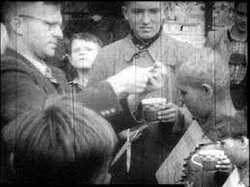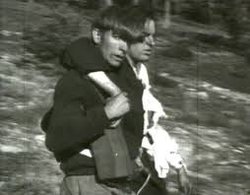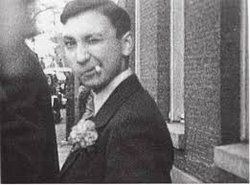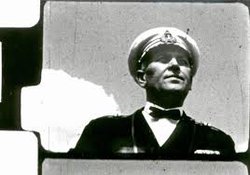PÉTER FORGÁCS
HUNGARY
SPECIAL GUEST
Péter Forgács (1950) media artists and independent filmmaker, based in Buda- pest. Since 1978 he has made more than thirty films and several media installa- tions. He is best known for his “Private Hungary” series of award winning films and installations often based on home movies from the 1920s-1980s, which document ordinary lives that were soon to be ruptures by an extraordinary historical trauma that occurs off screen. Since the early 1990s Forgács’ video installations have been presented at museums and art galleries throughout Europe and America. In 2007 Forgács was awarded with the most prestigious Dutch Erasmus Prize for his notable contribution to European culture. In 2009 he represented Hungary at the Venice Biennale, exhibiting the Col Tempo – The W. Project installation.

MEANWHILE SOMEWHERE... 1940 - 1943
52’ / DAY 5 | S2 21h30 > 24h00
Hitler’s plan was simple with most of the population of occupied East and Southern Europe, destroy or enslave them. In 1942 after the Wannsee Confe- rence the European Jew deadly destiny was decided as Final Solution. In Mean- while Somewhere the intimate, the brutal, the happy, the rare or clandestine amateur shots of different European amateur home movies and clandestine shots counter point a Nazi ritual’s film, the miscegenation’s racist punishment of the two young lovers, the eighteen year old German boy, George-Gerhard and the seventeen year old Polish girl, Marie in occupied Poland, Scinawa Nyska vil- lage, 1940. This public punishment film document is the rondo pulse through out the piece. Mosaics of suggestive different family’s images stories counter

EL PERRO NEGRO - STORIES FROM THE SPANISH CIVIL WAR
84’ / DAY 5 | S2 21h30 > 24h00
El Perro Negro tells personal dramas, faults, faiths, illusions and desperation, the unseen side of an insane war. The workers self-government experiments, the multitude suffering of civilians, the schism of the divided country, the revo- lutionary illusions, murders and the systematic massacres orgies of Franco’s brutality changed once and for ever the universe of Unamuno, Lorca, Buñuel, Hernandez, Durruti, the royalists, and the falangists.
The rise, the fall, the ideas, the final personal losses come near to our eyes. The unseen private films reveal the cruel and beautiful sides of the Spanish times, as a prelude of Word War II.

THE MAELSTROM
60’ / DAY 7 | S6 21h30 > 23h30
What we see is a Dutch Jewish family first living unknowingly in the shadow of the Holocaust and then trying to cope with it still unaware of what it will final- ly mean. A shot of the film’s photographer Max Peerboom and his family we’ve come to know, cheerfully sewing and doing general preparation for a trip to a “work camp” when their destination was in reality the nightmare of Auschwitz adds a devastating dimension to our understanding of the Final Solution that nothing else, neither Hollywood, nor documentary, has been able to provide.

THE DANUBE EXODUS
84’ / DAY 7 | S6 21h30 > 24h00
The travelogue The Danube Exodus documents the Jewish exodus from Slova- kia just before the beginning of World War II. In two boats, a group of 900 Slo- vak, Austrian jews tried to reach the Black Sea via the river Danube, in order to get to Palestine and from there. The film is based on amateur films of Captain Nándor Andrásovits, the captain of one of the boats. He films his passenger while they prayed, slept and even got married. At the end of the journey, it is clear the boat will not return empty; a reverse exodus takes place, this time of repatriating Bessarabian German, fleeing to the Third Reich because of the Soviet invasion of Bessarabia.